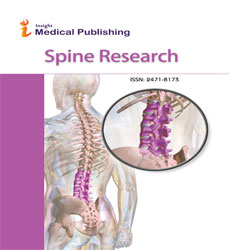Abstract
Digital Dentistry in a Post-Covid World: Digital Accuracy vs. Traditional Workflows
Statement of the Problem: The World Health Organization (WHO) declared COVID-19 a pandemic on March 11, 2020. SARS CoV-2, the virus that causes COVID-19, has shown the ability to become aerosolized with a potential airborne route of transmission. Dentists and dental hygienists are listed as two of the occupations in a nonhospital setting with the greatest risk of contracting the SARS-CoV-2 virus, as routine dental procedures involve aerosol generation and extensive contact with saliva. Post-pandemic recommendations designed to stem the transmission of Covid-19 include limiting exposure to bodily fluids. These protocols aim to minimize the risk of transmission of disease beyond what has been traditionally practiced. Dentistry is unique in medicine as a specialty with an exceptionally high risk for infectious agent transmission. Traditional workflows have relied heavily on patient impressions, air/water spray and physical models and articulators. All of these traditional workflows include heavy contact with potentially contaminated saliva as well as the potential for aerosolizing infectious agents. Newer digital workflows such as three-dimensional modeling, segmenting radiographs to solid-state models and digital articulation minimize contact with saliva and bodily fluids and are an important component of minimizing disease transmission. Furthermore, the use of digital workflows in dentistry provide a level of accuracy and functionality that was previously impossible using traditional methods. However, digital workflows as a method for decreasing disease transmission has not been widely acknowledged. Methodology & Theoretical Orientation: A meta-analysis was performed to investigate if there is a significantly decreased risk of disease transmission due to the use of digital workflows over traditional models. Four databases, including PubMed, Embase, Web of Science and Scopus were searched until January 2019. The search terms “digital dentistry, three-dimensional modeling, Covid-19, Dental Aerosols, SARS-CoV-2, Infection Control and Interventions” were used in combination to identify the publications providing data for disease transmission in the dental office related to infection control and aerosols. Conclusion & Significance: The risk of disease transmission in the dental office setting is significant when using traditional workflows. Further research is to show a correlation between decreased disease transmission and digital workflows. However, on the prima facie Digital workflows should reasonably decrease overall risk of disease transmission
Author(s):
Abstract | Full-Text | PDF
Share this

Google scholar citation report
Citations : 128
Spine Research received 128 citations as per google scholar report
Abstracted/Indexed in
- Google Scholar
- China National Knowledge Infrastructure (CNKI)
- Directory of Research Journal Indexing (DRJI)
- WorldCat
- International Committee of Medical Journal Editors (ICMJE)
- Secret Search Engine Labs
- Euro Pub
Open Access Journals
- Aquaculture & Veterinary Science
- Chemistry & Chemical Sciences
- Clinical Sciences
- Engineering
- General Science
- Genetics & Molecular Biology
- Health Care & Nursing
- Immunology & Microbiology
- Materials Science
- Mathematics & Physics
- Medical Sciences
- Neurology & Psychiatry
- Oncology & Cancer Science
- Pharmaceutical Sciences

